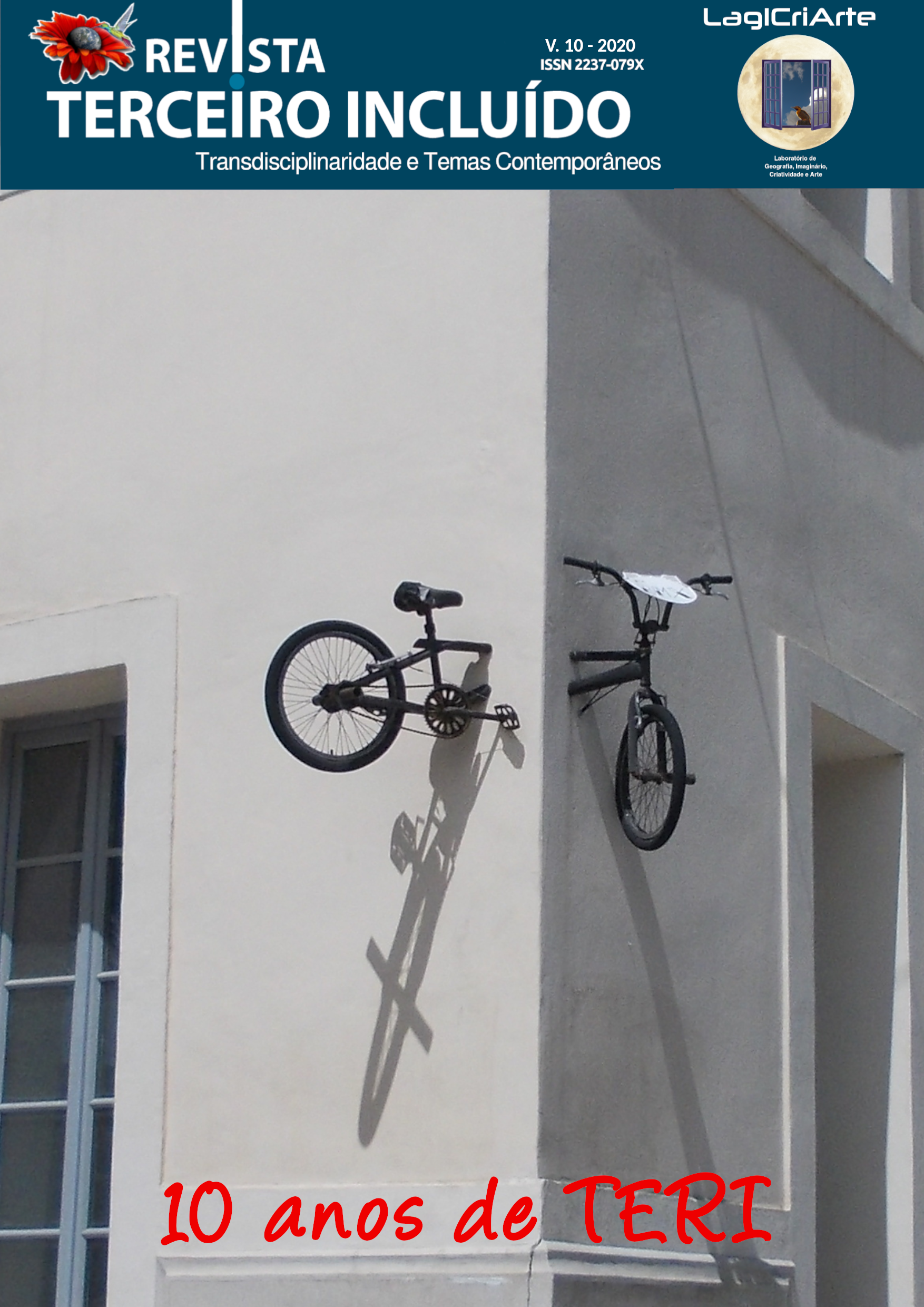Complexidade, Imaginário, Educação
uma carta de navegação
DOI:
https://doi.org/10.5216/teri.v10i1.66921Palavras-chave:
Palavras chave: Complexidade; Imaginário; Narrativa; Educação.Resumo
Resumo: O objetivo deste artigo é o de compreender as relações existentes entre complexidade, imaginário e educação e de como aplicar esses conhecimentos para repensar a organização escolar e a prática docente, nas quais se realizam as práticas simbólicas organizadoras do real social, no intuito de acolher e de conhecer a cultura individual ou de um grupo, para efetivar uma prática condizente com o atual cenário em que vivemos. Trata-se de um estudo qualitativo, ancorado no paradigma da complexidade, de Edgar Morin, e nas “Estruturas Antropológicas do Imaginário”, de Gilbert Durand, e fortalecido por estudos de renomados pesquisadores. Para a realização do estudo, foram elaboradas duas heurísticas: uma descrição da trajetividade acadêmica do discente e uma modesta apresentação do Teste Arquetípico de Nove Elementos, o AT-9. Acreditamos que por meio de uma emoção estética é que se descobre até um pouco mais de si mesmo, é que se aprende a conhecer o mundo e a natureza do outro, o mundo das subjetividades, o mundo da humanidade exterior, o mundo das outras mentalidades e culturas, como nos ensina Morin.
Downloads
Referências
ANDRESEN, Sophia de Mello Breyner. Obra poética. 2. ed. Porto: Assírio & Alvim, 2018.
BACHELARD, Gaston. A poética do espaço. São Paulo: Martins Fontes, 1993.
_________. A água e os sonhos. São Paulo: São Paulo: Martins Fontes, 2013.
BACHMANN, Helen I. O animal como símbolo nos sonhos, mitos e contos de fadas. Petrópolis: Vozes, 2016.
BARCELLOS, Gustavo. O banquete de Psique: imaginação, cultura e psicologia da alimentação. Petrópolis: Vozes, 2017.
BOHADANA, ESTRELLA. Sobre deuses e poetas. Rio de Janeiro: Tempo Brasileiro, 1992.
BYNGTON, Carlos Amadeu Botelho. A construção amorosa do saber: o fundamento e a finalidade da Pedagogia Simbólica Junguiana. São Paulo: Religare, 2003.
CHAVES, Iduína M. B. Vestida de Azul e Branco como manda a tradição: cultura e Ritualização na escola. Rio de Janeiro: Intertexto/Quartet, 2000.
CHEVALIER, Jean; GHEERBRANT, Alain. Dicionário de símbolos: mitos, costumes, gestos, formas, figuras, cores, números. 26. Ed. Rio de Janeiro: José Olympio, 2012.
CIRLOT, Juan-Eduardo. Dicionário de símbolos. São Paulo: 2. Ed. Editora Moraes, 1984.
DUCHASTEL, Alexandra. O caminho do imaginário: o processo de arte-terapia. São Paulo: Paulus, 2010.
DURAND, Gilbert. As estruturas antropológicas do imaginário: introdução à arquetipologia geral. São Paulo: Martins Fontes, 2002.
________. A imaginação simbólica. São Paulo: Cultrix/EDUSP, 1988.
________. Símbolo, mito e metodologia. Lisboa: Presença, 1982.
HALLIDAY, M.; McINTOSH, A ; STREVENS, P. As ciências linguísticas e o ensino da língua. Petrópolis: Vozes, 1974.
HILLMAN, James. O livro do Puer: ensaios sobre arquétipos do Puer Aeternus. São Paulo: Paulus, 1998.
_________. Uma investigação sobre a imagem. Petrópolis: Vozes, 2018.
KERÉNYI, Jones. Arquétipos da religião grega. Petrópolis: Vozes, 2015.
LE BRETON, D. Antropologia dos sentidos. Petrópolis: Vozes, 2016.
LOUREIRO, Altair Macedo Lahud (Org.). O velho e o aprendiz: o imaginário em experiências com o AT-9. São Paulo: Zouk, 2004.
MORIN, Edgar. Ciência com consciência. Rio de janeiro: Bertrand-Brasil, 1998.
_________. A cabeça bem-feita: repensar a reforma, reformar o pensamento. Rio de Janeiro: Bertrand Brasil, 2000.
_________. O método 2: a vida da vida. Porto Alegre: Sulina, 2011.
_________. Sobre a estética. Rio de Janeiro: Pró-saber, 2017.
OLIVEIRA, Alberto Filipe. Quando o imaginário se diz educacional. In: Revista Brasileira de Estudos Pedagógicos, v.1, n. 229, p. 679-705, set./dez.2010.
PAULA CARVALHO, J. C. A culturanálise de grupos: Teorias e heurísticas em educação e ação cultural. São Paulo: USP, 1990, mímeo.
PLATÃO. Diálogos. Rio de Janeiro: Ediouro, 1976.
ROSA, João Guimarães. Grande Sertão: Veredas. São Paulo: Nova Aguilar, 1994.
ROSSET, Clément. O princípio da crueldade. 2. Ed. Rio de Janeiro: Rocco, 2002.
STEIN, Murray. Jung: o mapa da alma – uma introdução. São Paulo: Cultrix, 2006.
TEIXEIRA, Maria Cecília S. Antropologia, cultura e educação. Rio de Janeiro: Imago, 1990.
TEIXEIRA, Maria Cecília Sanchez; ARAÚJO, A. F. Gilbert Durand: imaginário e educação. Niterói: Intextexto, 2011.











